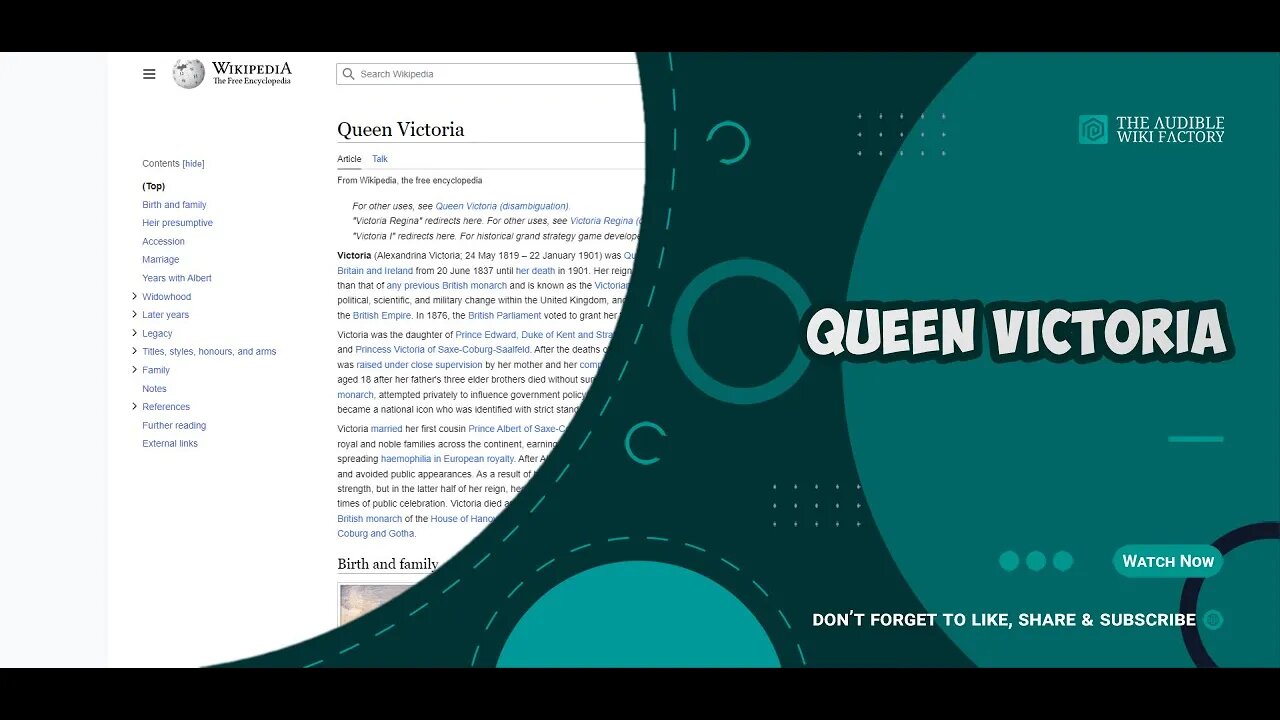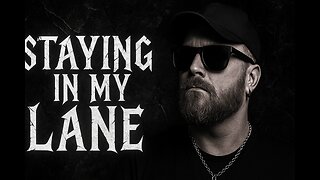Premium Only Content

Victoria was Queen of the United Kingdom of Great Britain and Ireland from 20 June 1837 until
Victoria (Alexandrina Victoria; 24 May 1819 to 22 January 1901) was Queen of the United Kingdom of Great Britain and Ireland from 20 June 1837 until her death in 1901. Her reign of 63 years and 216 days was longer than that of any previous British monarch and is known as the Victorian era. It was a period of industrial, political, scientific, and military change within the United Kingdom, and was marked by a great expansion of the British Empire. In 1876, the British Parliament voted to grant her the additional title of Empress of India.
Victoria was the daughter of Prince Edward, Duke of Kent and Strathearn (the fourth son of King George III), and Princess Victoria of Saxe-Coburg-Saalfeld. After the deaths of her father and grandfather in 1820, she was raised under close supervision by her mother and her comptroller, John Conroy. She inherited the throne aged 18 after her father's three elder brothers died without surviving legitimate issue. Victoria, a constitutional monarch, attempted privately to influence government policy and ministerial appointments; publicly, she became a national icon who was identified with strict standards of personal morality.
Victoria married her first cousin Prince Albert of Saxe-Coburg and Gotha in 1840. Their children married into royal and noble families across the continent, earning Victoria the sobriquet "the grandmother of Europe" and spreading haemophilia in European royalty. After Albert's death in 1861, Victoria plunged into deep mourning and avoided public appearances. As a result of her seclusion, British republicanism temporarily gained strength, but in the latter half of her reign, her popularity recovered. Her Golden and Diamond jubilees were times of public celebration. Victoria died aged 81 in 1901 at Osborne House on the Isle of Wight. The last British monarch of the House of Hanover, she was succeeded by her son Edward VII of the House of Saxe-Coburg and Gotha.
BIRTH AND FAMILY
Victoria's father was Prince Edward, Duke of Kent and Strathearn, the fourth son of the reigning King of the United Kingdom, George III. Until 1817, the only legitimate grandchild of George III was Edward's niece, Princess Charlotte of Wales, who was the daughter of George, Prince Regent (who would become George IV). Charlotte's death in 1817 precipitated a succession crisis that brought pressure on the Duke of Kent and his unmarried brothers to marry and have children. In 1818, the Duke of Kent married Princess Victoria of Saxe-Coburg-Saalfeld, a widowed German princess with two children—Carl (1804 to 1856) and Feodora (1807–1872)—by her first marriage to Emich Carl, 2nd Prince of Leiningen. Her brother Leopold was Princess Charlotte's widower and later the first king of Belgium. The Duke and Duchess of Kent's only child, Victoria, was born at 4:15 a.m. on 24 May 1819 at Kensington Palace in London.
Victoria was christened privately by the Archbishop of Canterbury, Charles Manners-Sutton, on 24 June 1819 in the Cupola Room at Kensington Palace. She was baptised Alexandrina after one of her godparents, Tsar Alexander I of Russia, and Victoria, after her mother. Additional names proposed by her parents—Georgina (or Georgiana), Charlotte, and Augusta—were dropped on the instructions of Kent's eldest brother, the Prince Regent.
At birth, Victoria was fifth in the line of succession after the four eldest sons of George III: George, Prince Regent (later George IV); Frederick, Duke of York; William, Duke of Clarence (later William IV); and Victoria's father, Edward, Duke of Kent. The Prince Regent had no surviving children, and the Duke of York had no children; further, both were estranged from their wives, who were both past child-bearing age, so the two eldest brothers were unlikely to have any...
LINK TO ARTICLE: http://en.wikipedia.org/wiki/Queen_Victoria
TAGS: Queen Victoria, Grand Crosses of the Order of St. Sava, Grand Croix of the Légion d'honneur, Dames of the Order of Saint Isabel, Knights Grand Cross of the Order of the Immaculate Conception of Vila Viçosa, Female critics of feminism, British people of German descent, Articles containing video clips, People from Kensington, People associated with the Royal National College for the Blind, Founders of English schools and colleges, British diarists, 19th-century diarists, British princesses, Indian empresses, Empresses regnant, House of Saxe-Coburg and Gotha (United Kingdom), Hanoverian princesses, House of Hanover, 20th-century British monarchs, 19th-century British monarchs, Queens regnant in the British Isles, Heads of state of New Zealand, Monarchs of Australia, Heads of state of Canada, Monarchs of the Isle of Man, Monarchs of the United Kingdom, Queen Victoria
#GeneralKnowledge #AudibleWikiFactory #Audible #Wikipedia #QueenVictoria
-
 41:13
41:13
The Audible Wiki Factory
2 years agoThe Oktoberfest is the world's largest Volksfest, featuring a beer festival and a travelling
441 -
 2:44:58
2:44:58
Barry Cunningham
5 hours agoPRESIDENT TRUMP IS LEADING AMERICA TO PROSPERITY! WHAT A DAY!
57.5K40 -
 2:32:33
2:32:33
The Quartering
5 hours agoTrump Epstein "Bombshell" From Wall St. Journal Then Expedition 33!
72.7K18 -
 LIVE
LIVE
SpartakusLIVE
6 hours ago$1,000 Spartakus Gauntlet on VERDANSK for the FIRST TIME || TrulyEvil, Enzo Alder, Firefighter MDO
246 watching -
 1:21:42
1:21:42
AimControllers
5 hours ago $0.89 earned🔴LIVE - TRIVIA NIGHT WITH PRIZES COME PLAY!
24.5K1 -
 1:45:13
1:45:13
RiftTV
7 hours agoLast Catholic Church in Gaza DESTROYED, Targeted by IDF? | The Rift | with Sarah Stock & Anna Perez
48.2K29 -
 4:55:21
4:55:21
PudgeTV
5 hours ago🟢PEAK - Gaming on Rumble | Community Gaming Night
8.16K -
 1:33:33
1:33:33
Precision Rifle Network
1 day agoS4E23 Guns & Grub - Gear We H8, Politics, & New Optics
13.4K -
 4:51:16
4:51:16
FatHeadedNoob
5 hours agoStaying In My Lane | Red Dead Redemption 2
3.77K2 -
 18:55
18:55
Tundra Tactical
10 hours ago $0.86 earnedGun Show Weirdos
10.2K1